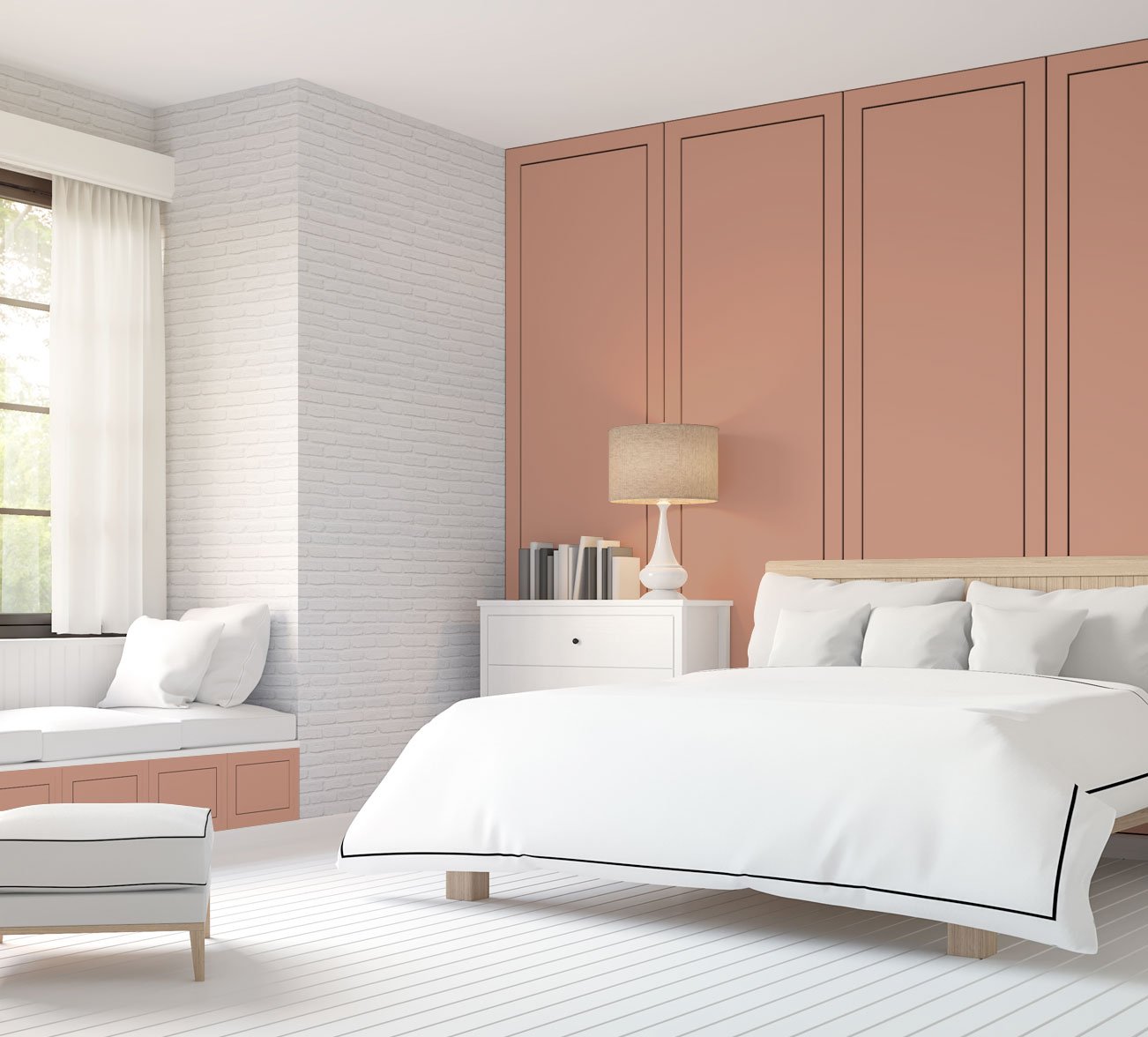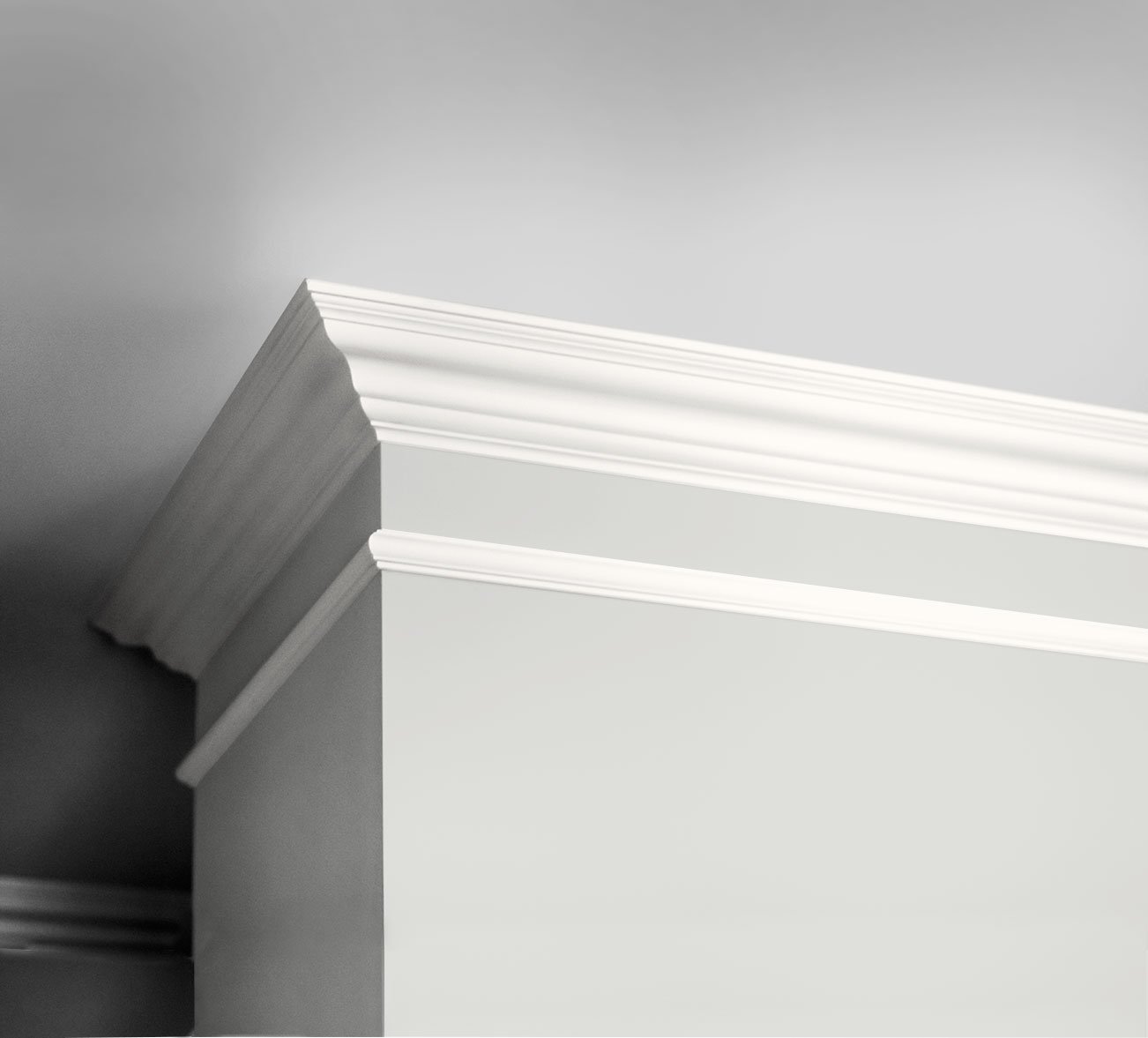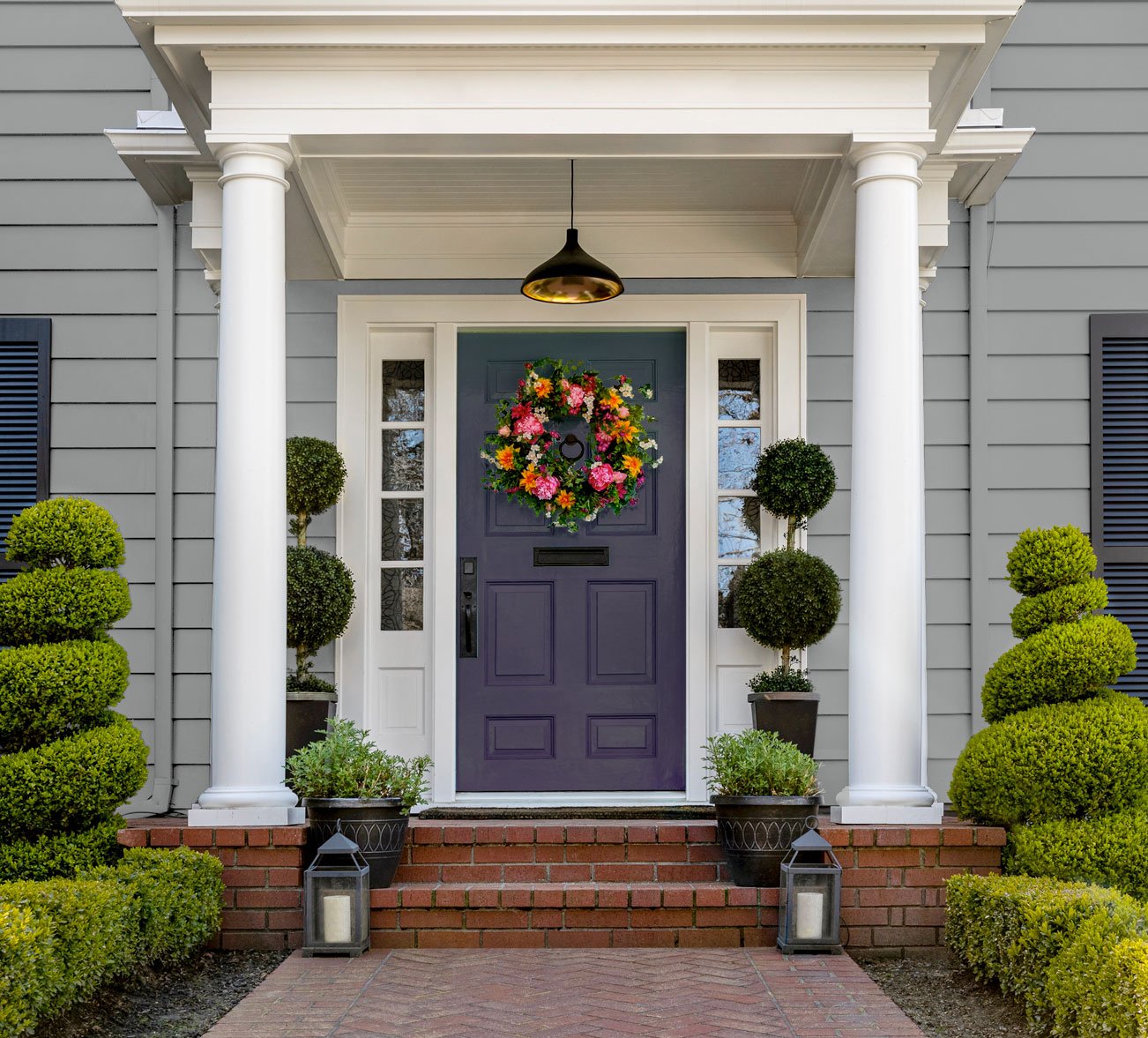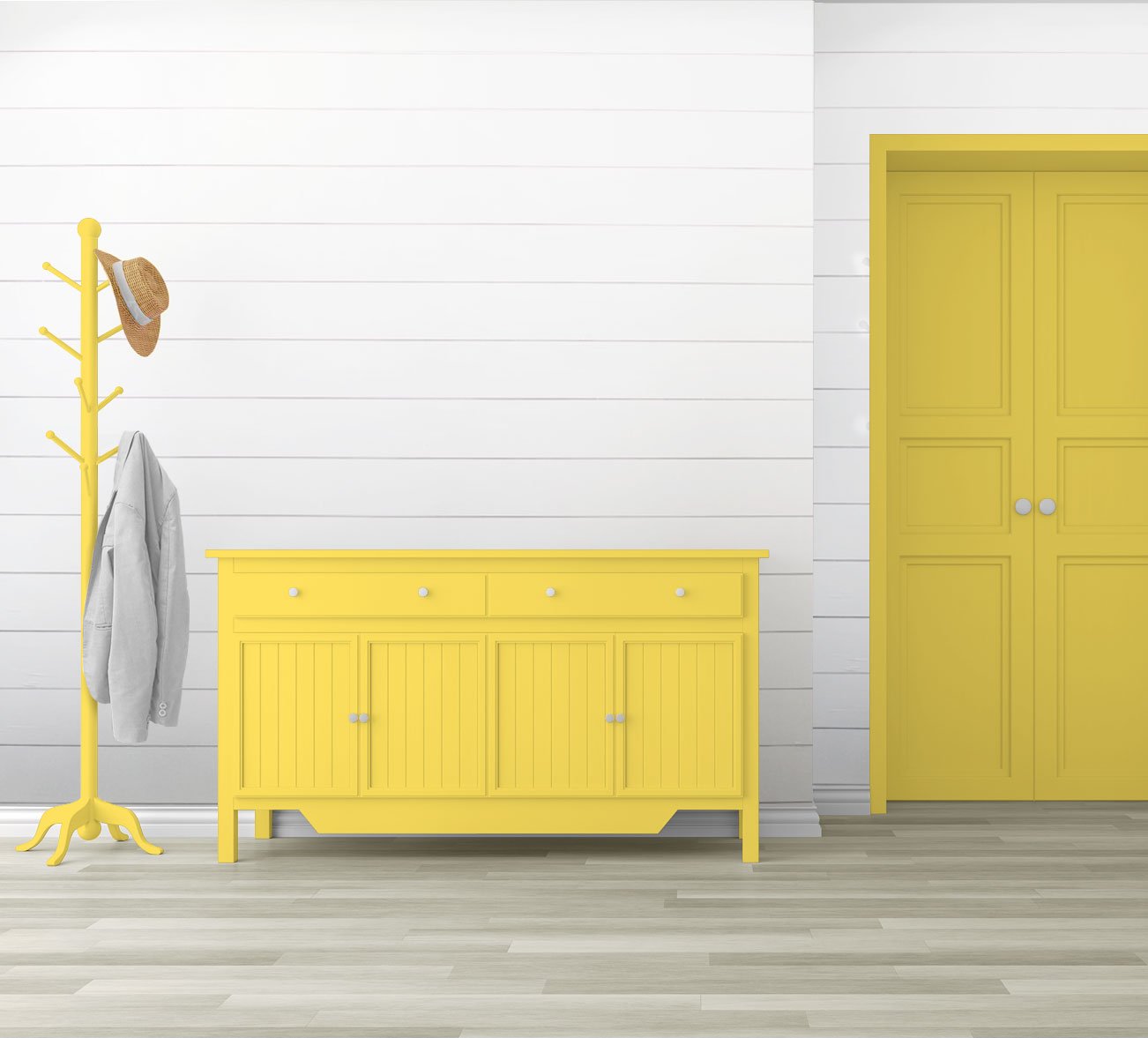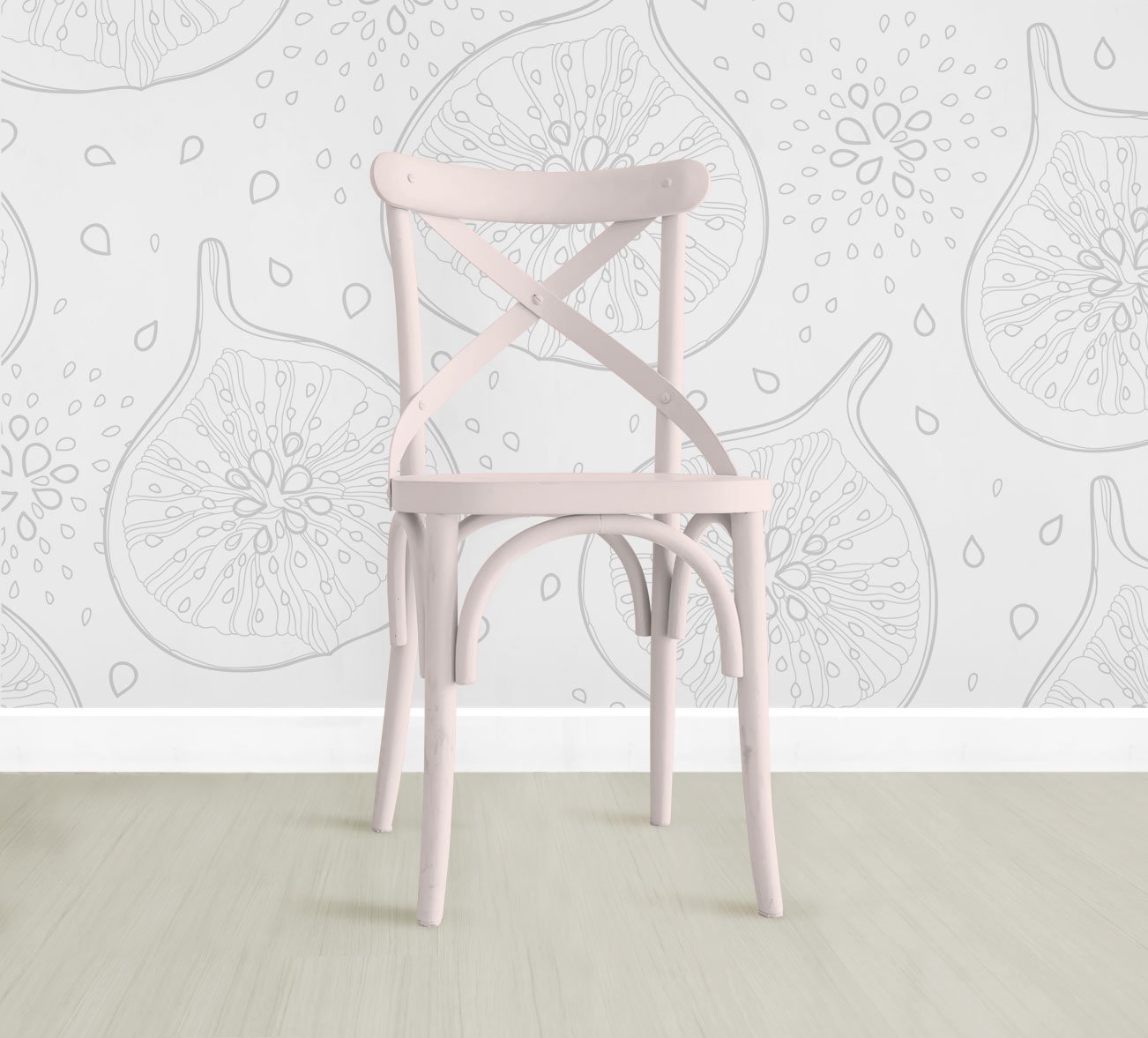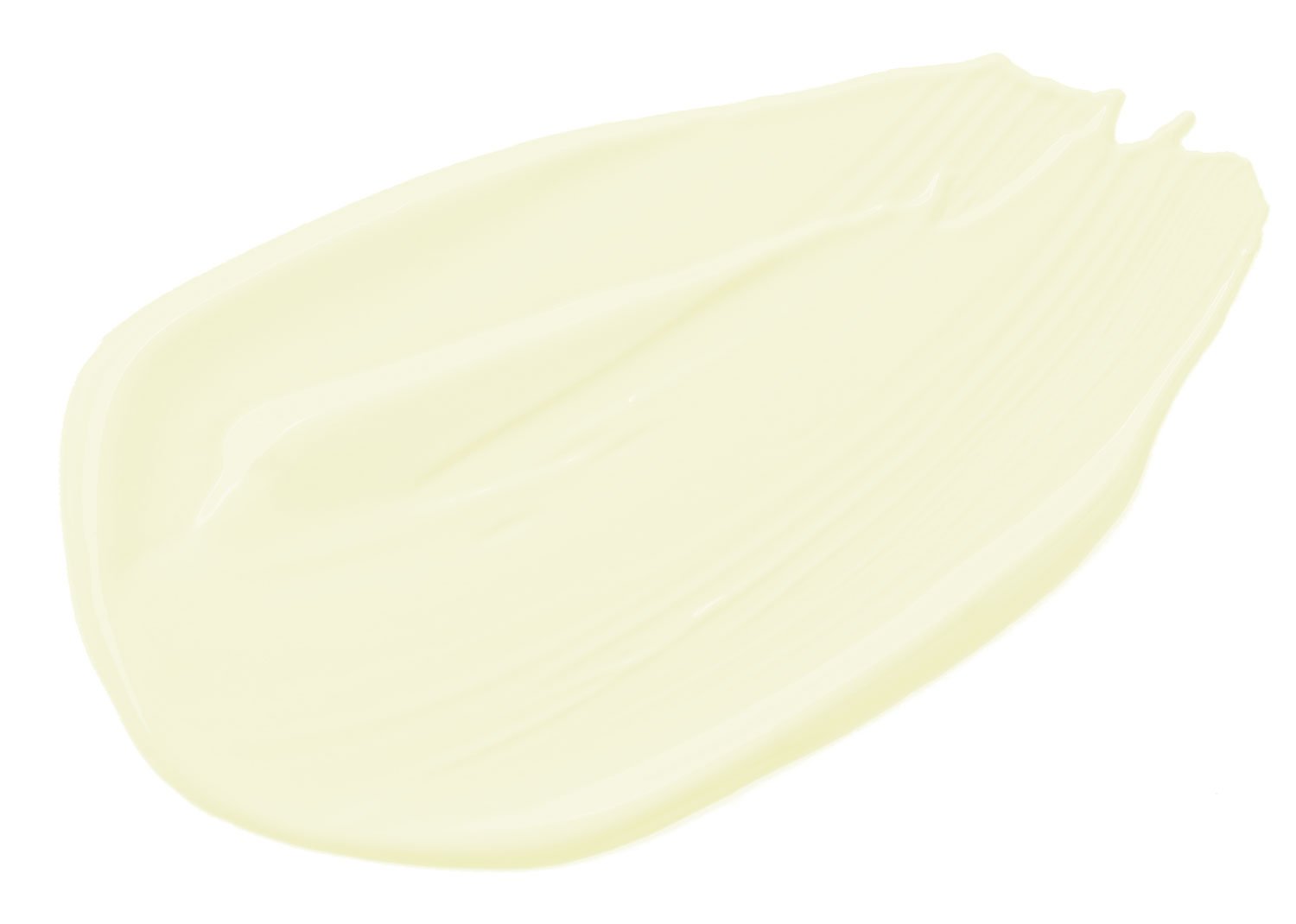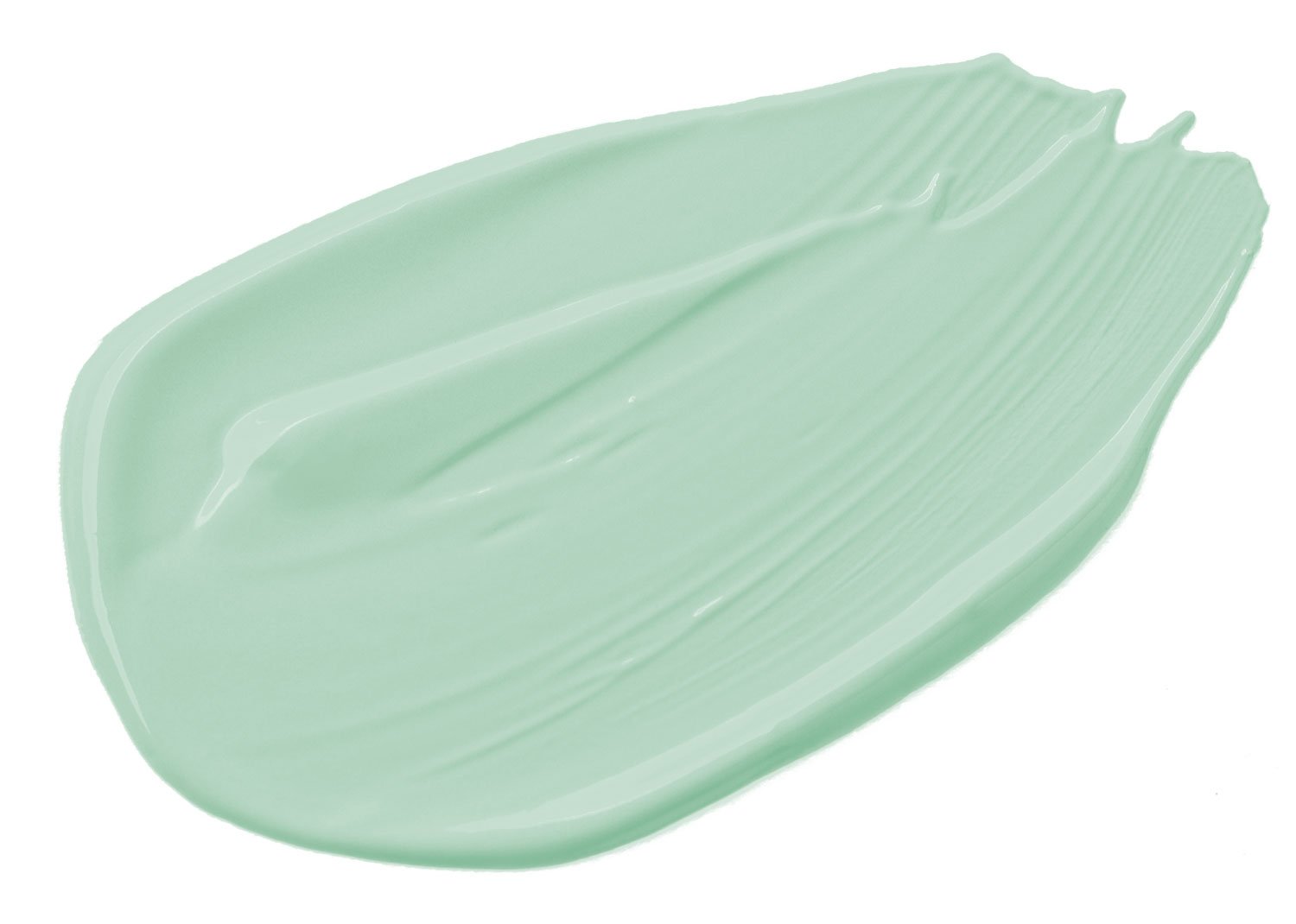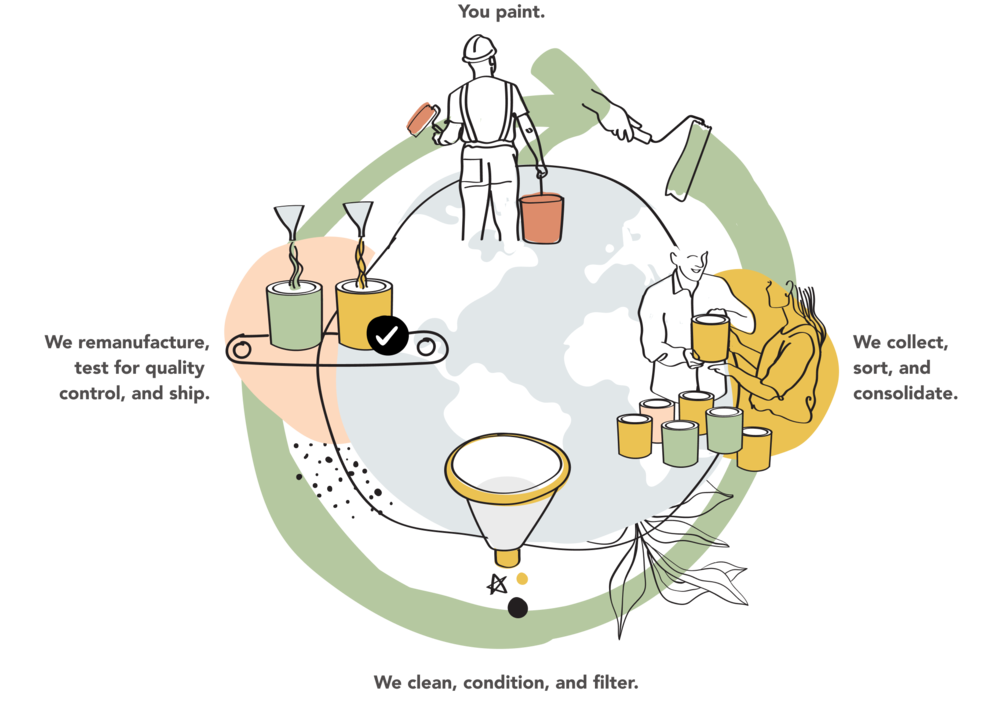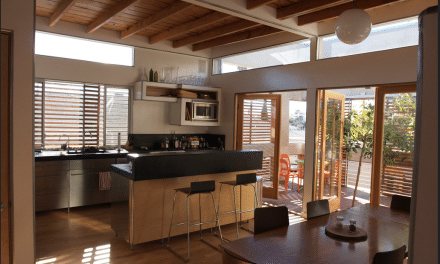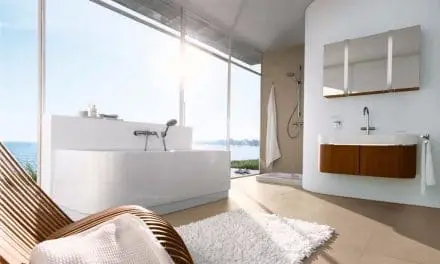Some of the links below are affiliate links, meaning at no additional cost to you, we will earn a commission if you click through and make a purchase. Thank you for helping us continue to bring you great content.
Images courtesy Recolor Paints
by Elaine Markoutsas
Genesis of a Sustainable Brand
One of the leading recycled paint brands in the United States, Recolor Paints had an unlikely birth. The place: A converted 800-square-foot garage in Scituate, Massachusetts, a seacoast town between Boston and Plymouth. There, two moms set out to vigorously blend, filter and reconstitute 5-gallon batches of leftover paints. The idea was to recycle. With a recipe they were figuring out on the fly. They wanted to make a difference.
Tania Keeble and Katherine Brown had been doing decorative painting and upcycling furniture out of a storefront. Keeble had been a patent attorney in her native New Zealand, had a postgrad degree in biochemistry and masters degree in design. She also worked as an interior designer.
What became obvious over time is that the two were accumulating lots of leftover paints. They checked with friends, who reported 20 to 30-gallon surpluses. They did a little research. It was an AHA! moment.
They discovered that millions of gallons of paint (today, more than 70 million)—10 percent of the purchase of paint—are wasted each year. Mostly the excess ends up in landfills and waterways or gets incinerated. “We wanted to be part of the solution,” says Keeble. “So we chose to give unused paint new life. We launched our green business.”
An organic evolution
Mind you, this was in 2009, still during a recession. Perhaps without aspirations of going national, but with a great deal of passion, they decided to give a new recycled paint business a whirl. “You know what?” Keeble recalls. “We had little kids. We wanted moms’ hours. It worked for us. Also, we didn’t have to invest a lot of money. We broke even as we learned on the job.” Boots on the ground, with no roadmap in hand, no YouTube how-to video. “There was some recycling going on in Canada and a little on the West Coast,” she says. “But nothing on the East Coast. It evolved organically.”
Breathing new life into unused, post consumer and post industrial latex paint—all brands—was the plan. The working MO: Screen. Consolidate by color, filter impurities with a mechanical sieve, remove potential contaminants. Add antimicrobial and preservative agents. “So that at the end of the day,” she says, “it’s the same as virgin product.” A little brainstorming led to the name Recolor. And in a brilliant move: On their logotype, the ECO stands out in green.
In early 2012, Recolor partnered with Habitat for Humanity. “We realized there was a good fit from feedstock,” says Keeble. “We were getting our hands on large volumes of paint on the way to the landfill. So we went wholesale. Our 100 percent recycled paints were first available through Habitat for Humanity’s ReStore. We share similar missions—products that are surplus or from deconstruction. Plus, 5 percent of sales go to building houses, supporting the local community.” It was a win-win. Now you can also find Recolor paints at Lowe’s and through the Recolor Storefront on Amazon.
Colors and finishes
There currently are 15 contemporary and five white colors in the core palette for interior paint, available in flat, eggshell and semi-gloss. White, gray and taupe in eggshell make up the exterior colors.
The palette was dictated by the colors that came in. Which made it a little challenging. “Everyone holds on to their whites,” Keeble explains. “They’re less likely to give those up. So we began accumulating colors we couldn’t find a home for in the main palette. We had a gap to fill.”
The result: Recolor Chalk Finish Paint. It’s 100 percent recycled, comes in a matte finish in 20 pop designer colors. Bonus: it can be used as a chalkboard. Otherwise, topping it with wax or a sealing coat like polyurethane protects the surface.
Sustainable to the max
“At the beginning, we were pretty hard core,” says Keeble. “We didn’t use water at all. We did everything by drying with recycled cloth. But that’s not easy to scale up. So we minimize water consumption. We recycle our metal cans. We’re very conscious about shipping and transportation. We make sure there are full trucks. With every decision, we look at environmental pros and cons.”
What makes the manufacturing sustainable
Every gallon of Recolor you buy saves 12 gallons of water and 13.6 pounds of CO2 emissions, while preventing 250,000 gallons of water pollution. Due to the manufacturing process and the fact that these paints have been opened before, Recolor paints are naturally low in VOCs.
Hiccups and Impact of COVID-19
The pandemic, of course, affected procurement. “Large-scale events stopped,” says Keeble. “So events where we might have had 300 to 1,200 cars in four hours, high volume events where people could bring in their unused paints, shut down, for months. Then in the fall, the amount of paint brought in increased by 30 percent. On the sales side, paint purchases started to go through the roof (for one thing, there was a lot of remodeling going on). And paint manufacturers were considered an essential business. At the same time, there has been a shortage of some raw materials for virgin paint. It’s an opportunity for us.”
Looking ahead
Recolor still is seeking out new partnerships to grow. “We see significant growth in 2022-2023. (Recolor grew 30 to 60 percent in the first half of this year.) We just had a fantastic opportunity that will put us into large national retailers,” she says.
Which may cause a little pivot. While working on a line for architects and designers was on the late 2021 plan (with possible color customization available), this is on hold for now. “Obviously we want to do it all,” she says. “But we have to be smart about it.”
Just like sticking to the core color palette. “I don’t see the need to expand,” Keeble says. “We want to keep things simple. Actually the more variation, there potentially is more opportunity for waste. Keep it simple and to the core.”
#EcoRenovate
In a shared appreciation for working toward a more sustainable future, Recolor came on board as a sponsor for Elemental Green’s branded sustainable renovation project, #EcoRenovate. Updating a penthouse inside of Chicago’s University Park Condominium, an iconic 1960s building designed by I.M. Pei and Araldo Cossutta, Elemental Green used a handful of different Recolor products throughout the condo to give it an open, airy refresh as mindful of the environment as it is of the building itself.
First, White was brushed onto the ceiling and trim to create a warm foundation for Sail in the kitchen and bathrooms (an off-white with subtle hints of yellow and green), and cozy, soft Dove in the living room and bedrooms. For Keeble, involvement was a no-brainer. “Sheridan Foster and the Elemental Green team reached out to us, and the project aligned with what we want to be,” she says.
The recycled paint maven feels that sustainable renovations like this are important. “Obviously education, getting the word out there, showing people (the application) is crucial,” Keeble says. “Sometimes the picture is worth a thousand words. People need to see the finished product. Let’s not forget about the person putting paint on the wall. Sometimes the user has a fear—what if it’s not like other paint? What are the nuances? But if it’s a recycled product, it’s essentially like virgin manufactured paint without cost to the environment. And you get incredible coverage. Secondly, for us, it’s about forming relationships with like-minded people. Networking. It helps propel the mission forward.”
Choosing recycled no or low-VOC paint is such an easy eco-step to take. Using recycled paint reduces pollution, landfill space and the need for raw materials, as well as conserves water and decreases the carbon footprint. “In the architecture and design world,” she notes, “there’s value to using recycled paint when it comes to LEED certification. I’m surprised that it’s not more mainstream. But I think the terminology is gaining some momentum now.”
How Keeble and Recolor continue to be a sustainability leader
“To be a part of the solution, growth is important,” says Keeble. “Just keeping both sides of the equation going. Sales and the collection. Promoting legislation nationally.” She is one of the founders of the 12-member International Paint Recyclers Association–and the only woman on the board. “I’m a very strong advocate of trying to make a difference for climate change,” she says, noting she’s especially committed to doing everything she can to protect the Antarctic environment.
With her own children, now ranging in age from 15 to 21, Keeble hasn’t drilled in reduce-reuse-recycle mantras, but has instead led by example. “They have been a part of the business from a very young age,” she says. “Mixing paint. Seeing me covered in it. At collection events. It was experiential learning.” After all, sustainability begins with us but continues with our children.
To read more insight from Tania Keeble and other women making strides in the sustainability sector, check out “A Tete-a-Tete with Women Leaders in Sustainability.” Find out more about #EcoRenovate on Elemental Green.



